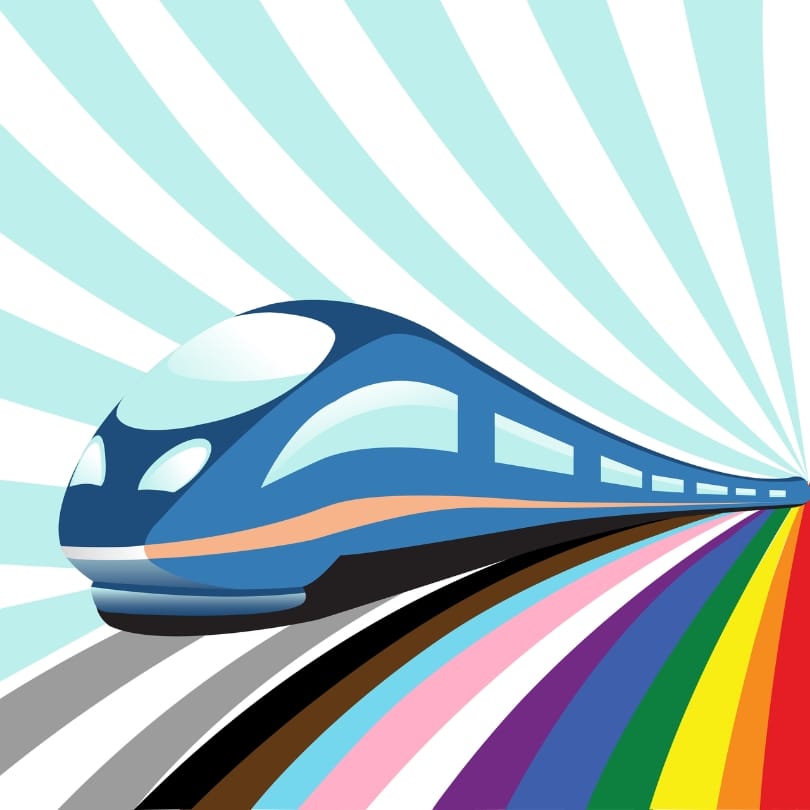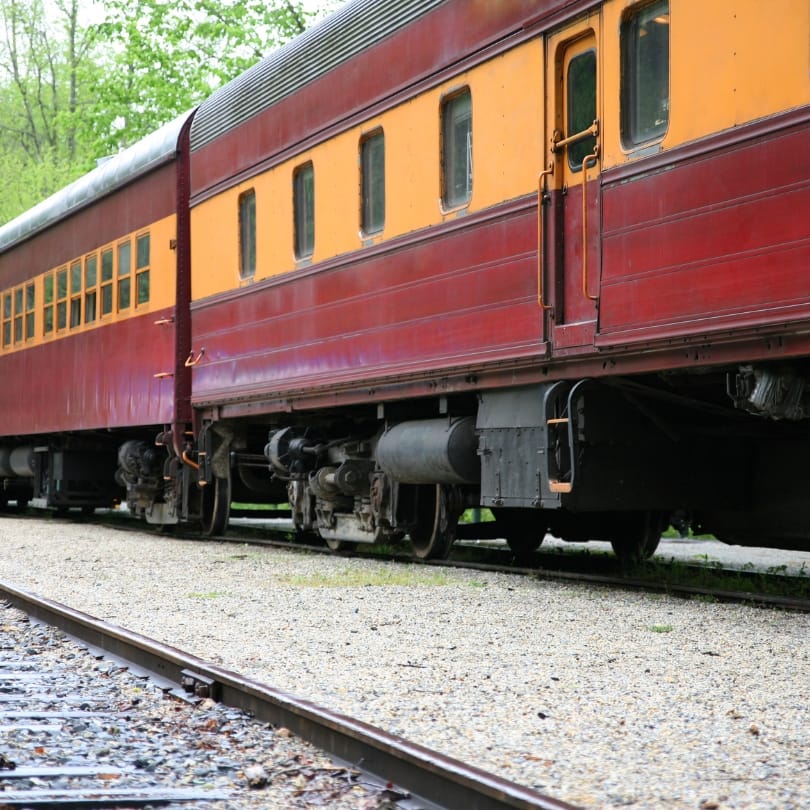Since the first Bradshaw’s Continental Railway Guide was published in 1847, publishers have been trying to explain Europe’s railways for the benefit of travellers.
There’s no one perfect way to describe the complexity of a railway network. A map shows you where you can go, but not which places are worth going to. A timetable tells you when a train leaves or arrives, but not whether you will be able to eat or sleep on board.
Reading timetables is a dying art now that we have apps and websites to plan our journeys, but apps can feel a bit like blundering around in a darkened room with only a laser pen for illumination. You can see what you point it at, but remain in ignorance of everything outside its beam.
This book from Lonely Planet turns up the lights on a whole continent.
The Guide to Train Travel in Europe is organised around six main high speed axes, connecting places from Moscow in the east to Lisbon in the west, and from Stockholm or London in the north to Malaga, Sicily or Split in the south. The routes criss-cross through hubs like Paris, Frankfurt and Munich, so you can connect them up in any way you wish.
The Guide is organised around six main high speed axes; you can connect them up in any way you wish.
There are sections to help you orient yourself in all the major hubs where you are likely to stop, as well as giving you the lowdown on countless provincial cities that you might not have heard of but that are well worth exploring in their own right.
For example, there is La Spezia in Italy, ‘hugely atmospheric’, with the world’s oldest naval museum. Or Ljubljana, capital of Slovenia, where cobbled passageways, courtyards and bridges are ‘a delight without cars’.
Germany seems particularly rich in lesser known destinations, from Aachen, the former capital of the Holy Roman Empire, which has a sumptuous cathedral begun in 796, to tiny Triberg, home of Germany’s highest waterfalls and the Black Forest Gateau (is it twinned with Bakewell? It sounds as if it should be).
The book tells the story of each journey, with service frequencies and travel times, and there are side quests, away from the main route, that you can add if you want to explore further.
For example, surely everyone who reads this book will yearn to visit the Białowieża Forest, on the Polish-Belorussian border, where endangered European bison roam a primaeval wilderness described as Europe’s Amazon. You can reach it in 3 hours and 15 minutes from Warsaw.
There are tips for train enthusiasts, but this is a book with broad appeal. It looks gorgeous, with plenty of pictures on every page to inspire you with wanderlust (and all the pictures are properly captioned too). The text – which, by the way, is in a beautifully clear typeface and (an under-rated quality) not too small – is not especially lyrical. But there’s a torrent of information. It’s a book for reading at the planning stage. It’s a little heavy to take in your backpack.
This is a book with broad appeal. There's a torrent of information.
The introductory section is particularly useful, with a briefing on the different types of trains, how and where to book tickets, and how to make connections. Some of this information may not stay up to date, and it’s likely you will need to check websites such as seat61.com as well, but it is extremely useful to be primed with what questions to ask even if the answers may change.
The introduction does a great job of setting the scene for the revival of interest in trains, and evokes that peculiar ‘back to the future’ energy of the railways.
Once they were at the frontier of technology and innovation (think Around the World in 80 Days), celebrated with stations so gorgeously elaborate and beautiful that they are now destinations in themselves. Then, for a while, the long-distance railways seemed like curiosities and nearly obsolete. But now swift, low-carbon European trains are once again looking like the future of travel.
The book mentions third party websites such as thetrainline.com and raileurope.com for booking tickets. These websites are brilliant, but do have some traps for the unwary. For example, if you look for tickets to Frankfurt on thetrainline.com, you will be offered 37 different Frankfurt stations. If you are not paying attention you might think that Frankfurt (Main) is the main station and you might guess that Frankfurt (Oder) is another station, or perhaps a general ticket to any Frankfurt station. In actual fact Frankfurt (Main) is the city of Frankfurt, on the river Main in the western part of Germany, and Frankfurt (Oder) is a completely different town, on the river Oder, more than 600km away on the Polish border. That’s when you need a map.
There are maps throughout this book, including a fold out map at the beginning showing all the main routes, and a map for each chapter showing the whole route and all the stops mentioned in the text. You will want to refer back to the maps frequently, when the narrative sections get confusing, so it’s very clever that each map has a colour coded border that makes it easy to find when flicking through the pages.
A few more maps would be welcome. For example, the chapter on the North-South axis suggests some spectacular additional routes north of Stockholm and right up into the Arctic circle, but these are too far north to fit on any of the maps. Once you’ve planned your route you might also want to acquire a more detailed map that will show you not only where you can stop but also what you are looking at on the way.
The book offers help with how to pronounce two of the most difficult place names for English speakers. This information is worth the price of the book alone.
Knowing a bit about languages is very helpful when travelling around Europe. How can you pick out your destination from a station announcement if you don’t know how it sounds? The book offers help with how to pronounce two of the most difficult place names for English speakers: Wrocław and łódź in Poland, or ‘vrots-wahf’ and ‘wuj’ respectively. This information is worth the price of the book alone. To get more help of this kind, check the pronunciation of place names online before you leave.
Some readers will find it reassuring to know that they will find English spoken in most places on the railway network, and even on-train announcements are sometimes made in English.
You’ll find some great advice in this Flight Free post. If it all sounds too complicated and daunting to organise yourself, you can turn to a holiday travel agent. Railbookers and Great Rail Journeys get a mention here.
The city guides are short and there’s a sensible focus on areas around the stations, and on what to take in on a flying visit. It’s also extremely helpful to be warned when the high speed train comes into a different station from local services. In the south of France the TGV station is sometimes a 20 minute bus ride from the town centre.
A little more information about transfers is sometimes needed: do you need to buy a ticket for the Metro across Paris or is it included in your TGV fare? Do you need cash or can you tap in and out with your bank card? Or buy a ticket on your phone? These are the kind of things that preoccupy passengers alighting for the first time at Gare du Nord, and this is the kind of information you’ll find on the fantastic website seat61.com.
Europe is so packed with interesting and beautiful places to visit, this book makes you wonder if you ever need to go anywhere else.
Europe is so packed with interesting and beautiful places to visit, this book makes you wonder if you ever need to go anywhere else. And European railways are a triumph of engineering and international cooperation. There are some fascinating details here of how different gauge railways come together, and the international tunnels, bridges and ferries that make border crossings.
Sometimes the train is actually loaded onto a ferry, as when you cross to Sicily at the Strait of Messina. Did you know that trains in Sweden travel on the right side of the tracks, whereas in Denmark they travel on the left, so Swedish trains have to switch around just north of Malmö before they cross the Öresund bridge into Denmark?
It’s so sad to read the sections about travel to Kiev and Moscow, knowing that (at the time of writing) European train services to Russia are suspended and the UK Foreign Office is advising against all travel to Russia.




